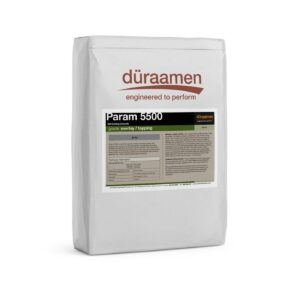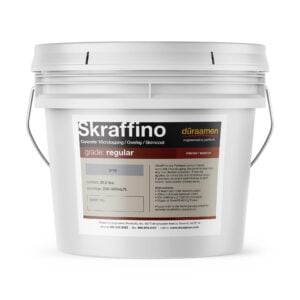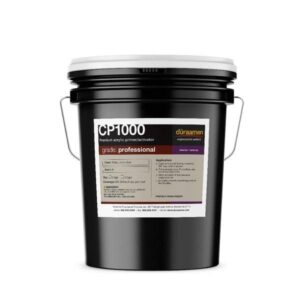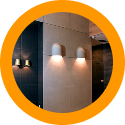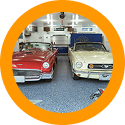Broom finishing is a simple and easy way to add texture to concrete driveways, patios, pool decks, and other surfaces. This texture adds grip, making it practical to use on potentially slippery surfaces, but it can also be decorative if you’re feeling creative.
Additionally, broom-finished concrete is cost-efficient, especially if you are confident enough to lay it yourself. Use Duraamen’s handy guide to avoid common pitfalls and ensure the best finish for your project.
What is Broomed Concrete?
Broomed concrete is a long-established method of adding non-slip texture to concrete floors such as pool decks, driveways, and patios. It is as simple as brushing the surface with a concrete broom, creating a pattern of grooves that prevent the concrete from becoming slippery when wet.
Broom Finished Concrete Pros and Cons
The pros of a broom concrete finish versus a smooth finish are that it reduces skidding, can be done at home, and provides a durable, long-lasting solution to your outdoor concretes. Broom finished concrete prices are usually around $8.00-$12.00 per square foot if you hire a contractor to lay it, and only the cost of materials if you want to do it yourself, making it even more cost-efficient.
The cons are that it can be less decorative than other finishes, and can trap dirt if proper care isn’t taken. If done incorrectly, you may also end up with inconsistent coloring or a finish that’s rough on bare feet.
How to Lay Broomed Concrete
Broomed concrete is an affordable process, one you could easily do at home with the right instructions and tools. These are the overall steps that should be followed when creating a broomed concrete surface:
- Pour out the slab
- Level or “screed” immediately to remove excess concrete
- Bull float or darby to ensure a level surface free of ridges or voids left by screeding.
- Allow any water on the concrete to evaporate
- Trowel your concrete to remove the lines created by bull floating. If you decide to trowel, it is important not to work too much air out of the concrete
- Broom the surface, using a concrete broom.
- After the concrete is cured, seal it with Dekguard. In cold climates where salt is used often, it is a good idea to seal it with a polyaspartic sealer such as Perdure P72.
Types of Broom Finished Concrete
The type of broomed concrete finish needed depends on the area in question, how much wear it’s likely to receive, and how visually appealing you want it to be.
The first thing to consider is the groove depth. According to the American Concrete Institute (ACI) there are three broad categories of finish based on the depth of the grooves:
- Fine broomed finish, up to 1/32 inches
- Medium broomed finish, between 1/32 and 3/64 inches
- Heavy-broomed finish, 3/64–1/8 inches
Keep in mind, these are guidelines, and shouldn’t be considered precise broom finished concrete specifications.
Besides factors like the hardness of the surface at the point of brooming, the biggest factor on the depth of the finish is the type of brush used. A soft nylon or horsehair brush is best for a finer finish, while a stiff-bristled concrete broom is best for a heavy finish.
As a rule of thumb, a deeper groove provides superior grip and durability. Consider how the space will be used. A broom finished concrete driveway will experience lots of footfall as well as cars driving over it, so it will need a heavier finish. A patio, meanwhile, suffers less wear and is a perfect location for light broom finished concrete.

Tips for Elevating Your Broom Finished Concrete
Readiness
The concrete must reach the correct hardness, or “readiness”, before being brushed. This is a tricky balance to achieve. Waiting too long between laying and brushing concrete makes it impossible to produce grooves of the desired depth while brushing too soon risks removing too much of the surface layer, causing the concrete to be weak.
Many contractors use the finger test to check the readiness of the concrete. If you can press your finger into the surface without it leaving an indent, then it’s ready for brushing. Depending on weather conditions, it can take between 20 minutes and 4 hours for concrete to reach the correct hardness.
Clean brush and surface
You don’t want to brush dirt or other impurities through your concrete. Not only will this spoil its look, but can also damage the surface and reduce the finish quality. Clean and vacuum the surface before starting, and rinse the broom frequently when brushing.
Be strategic about brush-strokes
Plan the direction of brush strokes before starting. If the surface needs to drain water, ensure the brush strokes lead toward the drain. If working in a walled space (for example, a broom concrete pool deck), brush parallel to the walls so that the length of the area can be brushed in one stroke. This prevents start-stop lines in the final texture. If it isn’t possible to complete the length of the space in a single stroke, consider using a broom head without a handle.
Add color
Colorants such as Düraamen Aquacolor can elevate surfaces that are in good condition by giving them a pop of color. Aquacolor can be sprayed on between brooming and sealing.
Add patterns
Decorative designs can be added to brushed concrete by changing the direction of brush strokes, creating checkerboard patterns, wood grain effects, herringbone patterns, and more.
Consider resurfacing
Existing concrete substrate can also be elevated using a single component concrete such as Uberdek. Uberdek is a fantastic resurfacing choice for broom concrete patios and other surfaces, and costs around $8-$10 per square foot.
After the surface has been feather patched using a patching compound (for example, Param FP) to fix any divots in the surface, a primer such as CP1000 can be applied after three hours of drying time. Once the primer has had one or two hours to dry, apply a base layer of Uberdek. This will then require 24 hours to dry, after which a finish coat of Uberdek can be applied. This coat can be troweled and brushed immediately.
Remember to seal
It is vital to cure and seal a broom finished concrete surface. Consider a siloxane-modified sealer such as Dekguard, which lasts twice as long as traditional solvent-based acrylic sealants.
So there you have it. By following this guide along with our helpful video instructions, you can avoid many of the most common pitfalls when brush finishing your concrete, and you will be left with a perfect, high-end look. Visit the Duraamen store to stock up on supplies, and dust off your broom!
